 W
WButa Kola is an Animist form of Spirit worship from the coastal districts of Tulu Nadu and some parts of malenadu of Karnataka and Kasargod in Northern Kerala, India. The dance is highly stylized and held in honor of the local deities worshiped by the Tulu speaking population. It has influenced Yakshagana folk theatre.
 W
WChhau dance, also spelled as Chau or Chhaau, is a semi classical Indian dance with martial, tribal and folk traditions, with origins in eastern India. It is found in three styles named after the location where they are performed, i.e. the Purulia Chau of Bengal, the Seraikella Chau of Jharkhand and the Mayurbhanj Chau of Odisha.
 W
WDhimsa is a tribal dance form that is performed primarily by Porja caste women in Andhra Pradesh .
 W
WEssence of Life is a performing art group based in Bangalore, established by Dega Deva Kumar Reddy in 2012 to promote teachings of Jiddu Krishnamurti.
 W
WGarba is a form of dance which originates from the state of Gujarat in India. The name is derived from the Sanskrit term Garbha ("womb") and Deep. Many traditional garbas are performed around centrally lit lamp or a picture or statue of the Goddess Shakti. Traditionally, it is performed during the nine-day Hindu festival Navarātrī. Either the lamp or an image of the Goddess, Durga is placed in middle of concentric rings as an object of veneration.
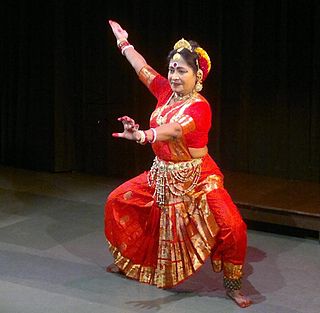 W
WGaudiya Nritya or Gauriya Nritya, is a Bengali dance tradition. It originates from Gauda, also known as Gaur, in Bengal.
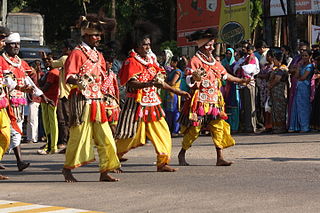 W
WGoravara Kunitha is a traditional dance of Kuruba Gowdas of Karnataka. Kuruba Gowdas are devotees of lord Mailara Linga, men belonging to this community take Deekshe or the process of initiation to follow the tradition of Gorava. The Deekshe is usually performed before marriage. They dedicate their rest of lives for lord Mailara Linga and the folk form Goravara Kunitha.
 W
WJhumair or Jhumar is an Indian folk dance from the Indian states of Bihar, Jharkhand, Chhattisgarh, Odisha and West Bengal. It is folk dance of Sadan, the non-tribal people of Chotangpur region. It is quite famous among Tea-garden community of Assam.
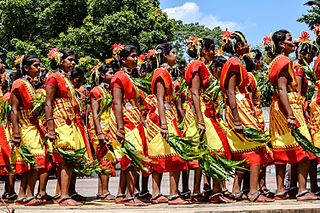 W
WKarma dance or Karma Naach is a traditional dance of central and Eastern India annually performed during the karma festival. Karma is a famous autumnal festival, it starts from the 11th day of the bright fortnight of the month of Bhadrab. It is performed in State of Chhattisgarh, Jharkhand, Madhya Pradesh, Odisha and West Bengal. Karma means 'fate'.
 W
WLavani is a genre of music popular in Maharashtra, India. Lavani is a combination of traditional song and dance, which particularly performed to the beats of Dholki, a percussion instrument. Lavani is noted for its powerful rhythm. Lavani has contributed substantially to the development of Marathi folk theatre. In Maharashtra and southern Madhya Pradesh, it is performed by the female performers wearing nine-yard long sarees. The songs are sung in a quick tempo.
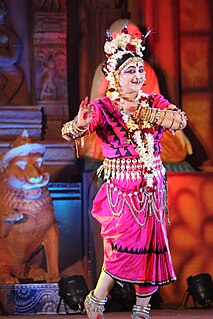 W
WMahari is a ritualistic dance form from the eastern Indian state of Odisha that used to be performed at the temple of Lord Jagannatha at Puri by devadasi dancers called maharis. Following the abolition of the devadasi system, the dance has been discontinued at the Jagannatha Temple but is now performed on stage at many venues. The Mahari dance spurred the development of both Odissi and the Gotipua dance forms of Odisha. The Maharis have been among the foremost exponents of both traditional Odia dance and Odissi music.
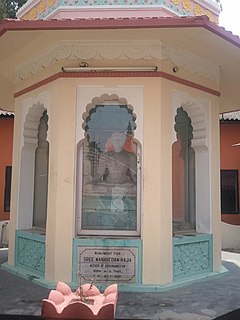 W
WManaveda (Malayalam മാനവേദന്, the Zamorin Raja of Calicut in northern Kerala is renowned as author of Krishnanattam.It is a dance drama and presents the story of Krishna in a series of eight plays.
 W
WMatki Dance is mostly performed in the Malwa region of Madhya Pradesh, India. It is a solo dance performed by ladies on special occasions like weddings, birthdays, or any other special occasion. In the Hindi language, matki means a small pitcher or a small earthenware pot. In this dance, the ladies are dressed in sarees or in lehanga decorated with many ornaments. The main musical instrument used in this dance is the dhol. Matki dance is generally performed in a circular position. Women balance an earthen pot on their head. They also have a veil on their face.
 W
WNacni means female dancer in north Indian languages. In the east-central Indian states of Jharkhand, West Bengal, and Orissa, the term nacnī refers to female performers who sing and dance professionally in rural areas, accompanied by male ḍhulkī and nagarā drummers who move around the stage with her.
 W
WNagaradhane is a form of Cobra Worship (snake) which, along with Bhuta Kola, is one of the unique traditions prevalent in Coastal districts of Dakshina Kannada, Udupi and Kasaragod alternatively known as Tulu Nadu, practiced by Tuluva community members. Cobras are not just seen as deities, but as an animal species which should be respected, appeased and protected for multiple social, religious and ecological reasons.
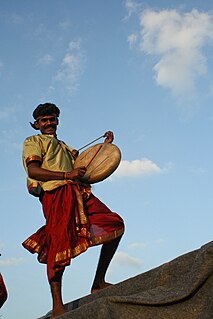 W
WParai Attam is a special type of dance in Tamil culture in which folks beat parai and dance to its rhythm.
 W
WParichamuttu Kali is an Indian martial-arts dance form of Kerala practiced by the Nazrani Christians who trace their origins to the evangelistic activity of Thomas the Apostle in the 1st century. It is performed by men bearing swords and shields and follows the movements and steps of Kalarippayattu.
 W
WPerini Sivathandavam or Perini Thandavam is an ancient dance form, from Telangana, which has been revived in recent times. It originated and prospered in Telangana, during the Kakatiya dynasty. Perini is performed in honour of Lord Siva, the hindu god of destruction and it is believed that in ancient times this was performed before the soldiers set to war. Padmasri Dr. Nataraja Ramakrishna was the person who revived this art form recently.
 W
WThe Pung cholom is a dance form originated from Manipur, which is the soul of the Manipuri Sankirtana music and the classical Manipuri dance. The Pung cholom is a unique classical dance of Manipur. This dance may be performed by men or women and is usually a prelude to the Ras Lila. In this style, the dancers play the pung while they dance at the same time. Dancers need to be graceful and acrobatic at the same time. They use these acrobatic effects without breaking the rhythm or flow of music. The dance is marked by a gentle rhythm, which gradually builds up to a thunderous climax. Pung cholom borrows elements from the Manipuri martial arts, Thang Ta and Sarit Sarak and also from the traditional Maibi Jagoi dance.
 W
WRaibenshe, alternatively, Raibeshe, is a genre of Indian folk martial dance performed by male only. This genre of dance was once very popular in West Bengal. Presently, it is performed mostly in Birbhum Bardhaman and Murshidabad districts.
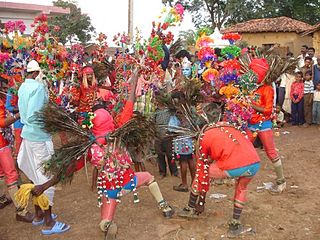 W
WRaut Nacha is a dance performed by Yadavas, a caste which considers themselves to be descendants of Krishna. For them it is as a symbol of worship to Krishna. They perform the dance at the time of 'dev udhni ekadashi'. It is believed that it is time of awakening of Gods after brief rest according to Hindu panchang (calendar).
 W
WSaang, also known as Swang or Svang (स्वांग), is a popular folk dance–theatre form in Rajasthan, Haryana, Uttar Pradesh and Malwa region of Madhya Pradesh. Swang incorporates suitable theatrics and mimicry accompanied by song and dialogue. It is dialogue-oriented rather than movement-oriented. Religious stories and folk tales are enacted by a group of ten or twelve persons in an open area or an open-air theatre surrounded by the audience.Swang as an art of imitation means Rang-Bharna, Naqal-Karna.
 W
WTiger dance is a traditional performing art in which persons wearing tiger costumes dance by themselves or with others.
 W
WTribhaṅga or Tribunga is a standing body position or stance used in traditional Indian art and Indian classical dance forms like the Odissi, where the body bends in one direction at the knees, the other direction at the hips and then the other again at the shoulders and neck.